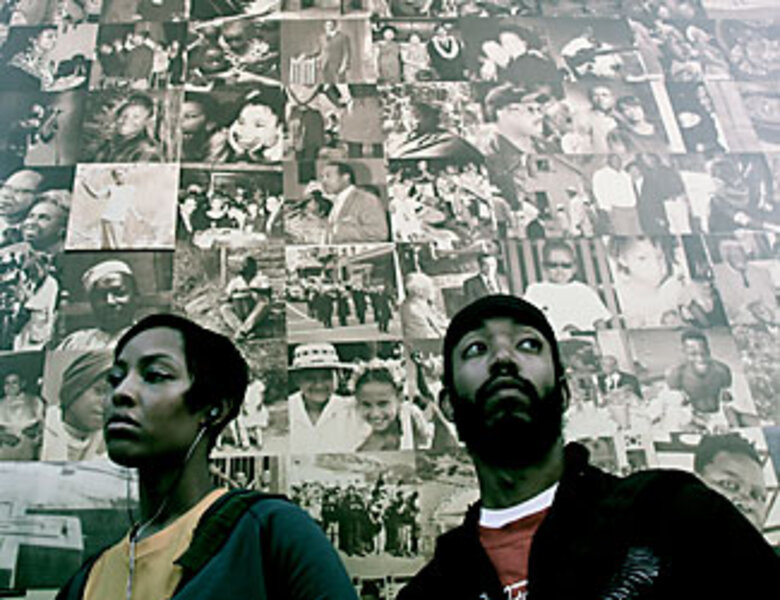Review: 'Medicine for Melancholy'
Loading...
With "Medicine for Melancholy," writer-director Barry Jenkins is also making his feature film debut with an off-kilter love story. Unlike "Moscow, Belgium," however, which mines the mainstream, Jenkins's movie sinks its toes into indie film terrain – specifically Richard Linklater's marvelous "Before Sunrise" and "Before Sunset." The qualitative difference between Jenkins's wispy romance set in San Francisco and Linklater's lyrical bookend masterpieces set in Paris is chasmic, but at least Jenkins doesn't try to fob his film off as anything more than it is. It's an unassuming little piffle that wafts away while you're watching it.
The film begins when Joanne (Tracey Heggins) and Micah (Wyatt Cenac), strangers at a party who spent the night together, conclude their one-night-stand with a largely wordless breakfast in nearby Noe Valley. Micah wants to see Joanne again; she just wants to be rid of him. Or does she? By accidentally leaving her purse in the cab they share, she leaves him an opening to track her down. Bicycling over to her fancy Marina District digs (he's from the downscale Tenderloin District), he ingratiates himself by picking up a guitar and singing a tune from "Mr. Rogers' Neighborhood." Now if that isn't enough to break a girl's heart, what is?
Joanne's live-in boyfriend, an art curator, is conveniently in London. He's also white, which annoys Micah, who, like Joanne, is African-American. Micah sees everything in racial terms, but he's not a scabrous ranter. He just carries a chip lightly on his shoulder – all the time.
The biggest love story in this movie is not between Joanne and Micah – it's rather wan – but between Jenkins and San Francisco. The city has been photographed lovingly in colors so muted they are essentially black and white. He has a Mr. Rogers-like affection for this neighborhood, which means he also rallies against its injustices. There are extended dissertations by Micah about how black housing districts were razed in the 1960s as "urban blight." There's also a long interlude with actual housing activists debating ways to combat the curtailment of rent control.
This last sequence has no thematic reason to be in the film – Micah, who sells fish tanks for a living, does not have a rent problem, and Joanne is supported by her boyfriend. And yet the scene gives the film a documentary-style verity that helps root it in the real world. The scene also recalls the early movies of Jean-Luc Godard, who often inserted agitprop ramblings into his narratives as both clarion calls and alienation devices.
Joanne wears a T-shirt that says "Loden," and this, too, is an homage, in this case to actress Barbara Loden, whose sole directorial feature, "Wanda" (1971), is a classic of the indie movement. (Loden was married to director Elia Kazan.)
Jenkins has an admirable feeling for, as the French would say, mise en scène, and a gift for placing actors in naturalistic settings. What he lacks at this point is a strong story sense. He may not care. But without the bedrock of narrative, or compelling performances, "Medicine for Melancholy" fades fast. Grade: B-.





